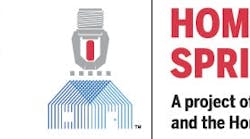In 1947, close to 10,000 people died in fires annually and wildfires caused $25 million in damage that year. Even though President Woodrow Wilson declared National Fire Prevention Day in 1920, the proactive thinking of fire prevention was not in place across the country. Firefighters were there for the reactive response once fires were reported. After they mopped up the scene, they went back to the station to await the next fire.
In May 1947, President Harry S. Truman held the President’s Conference on Fire Prevention to understand the root causes of the fire problem across the United States. Following the conference, they created the 300-page report that detailed the causes of fire and created best practices that could be applied across the country.
The report begins with these words from President Truman: “The serious losses in life and property resulting annually from fires cause me deep concern. I am sure that such unnecessary waste can be reduced. The substantial progress made in the science of fire prevention and fire protection in this country during the past 40 years convinces me that the means are available for limiting this unnecessary destruction.”
Last month, a diverse group—from fire chiefs and prevention officers to manufacturers and insurance providers—attended the 17th Annual Harry S. Truman Legacy Symposium at the Harry S. Truman Little White House in Key West, FL, to understand where those findings are 52 years later as it pertains to fire prevention in the United States.
Opening the event, Chief Dennis Compton, chairman of the board of the National Fallen Firefighters Foundation, said, “We are here today, because the serious loss of life and property causes us just as much concern as it did for President Truman. Despite all our collective efforts over the last 72 years, America is still burning.”
Reviewing 1947 through 2019, there have been many positive changes, including the reduction in fire deaths from 10,000 to just over 3,000 annually. Some communities have adopted laws for smoke alarms, fire sprinklers and life safety codes. Fire departments are proactive with fire prevention, or community risk-reduction efforts and data is being collected to validate the efforts and understand trends. At the same time, the causes of fires (cooking, smoking, electric-related) have not changed, people are dying in homes without working smoke alarms and efforts are being made to prevent sprinklers and codes from becoming law.
The key findings from the 2019 meeting include:
- Integrating fire prevention/public education into all ranks of the fire service;
- Collecting and applying data to understand local and national fire problems and share solutions;
- Embracing and understanding technology to share prevention and risk reduction messages and broadening the reach to the country’s diverse population. Using that technology, develop nationwide marketing efforts that can also be used locally;
- Tie mortgage funding to fire sprinkler installations.
The next steps will take all the findings and discussions and turn them into products that can be used by fire departments across the country in an effort to stop the loss of life, fire damages and reduce the number of firefighter fatalities and injuries.
There was a lot to take in during the three-day event in Florida, but one of the most inspiring efforts in moving prevention ahead was in the Little White House itself. It was only a few years ago that the foundation took one of the suggestions from the 1947 report and added automatic fire sprinklers to the home built in 1890. The retrofit effort will now protect this iconic piece of American history, plus all the artifacts that it contains.
At the end of the day, every firefighter has the responsibility to make their community safer and it doesn’t require much time or come at a big cost. Check smoke and carbon monoxide alarm batteries the next time you are on an EMS or fire alarm response. Tailor your risk reduction messages to children and adults based on the fire problems in your community, such as cooking or careless smoking. The monetary cost here is very little compared with the cost of the loss of just one life.






